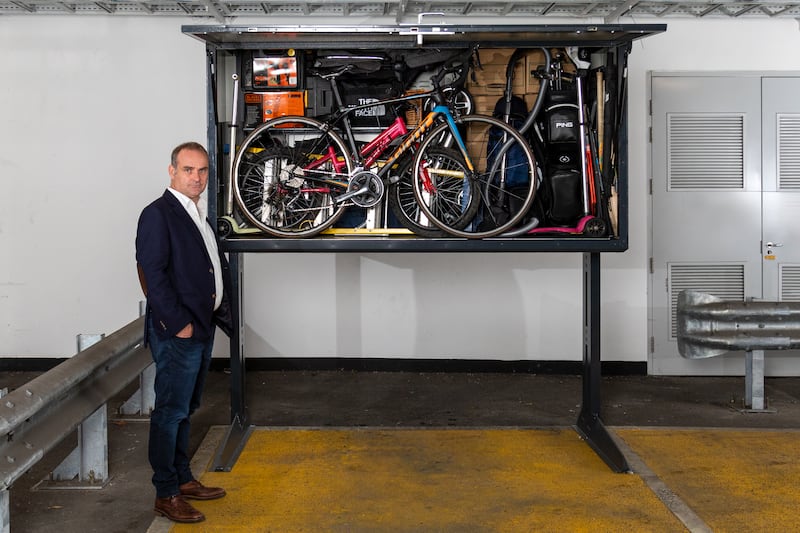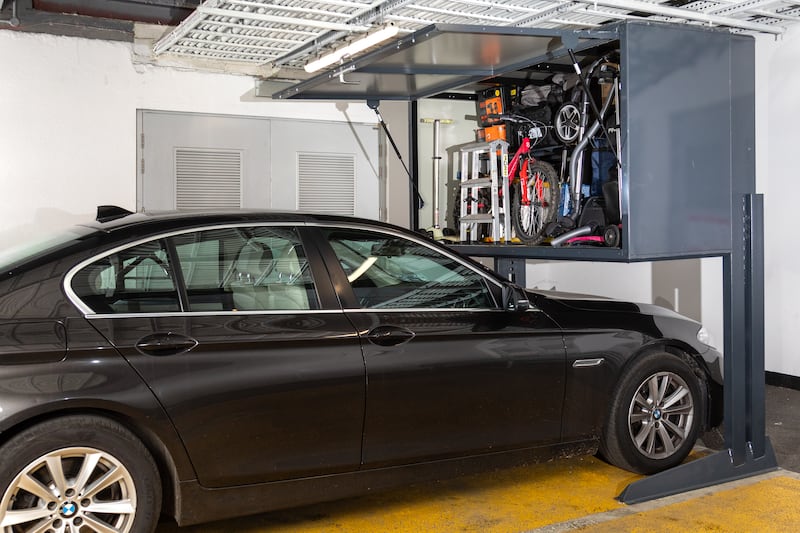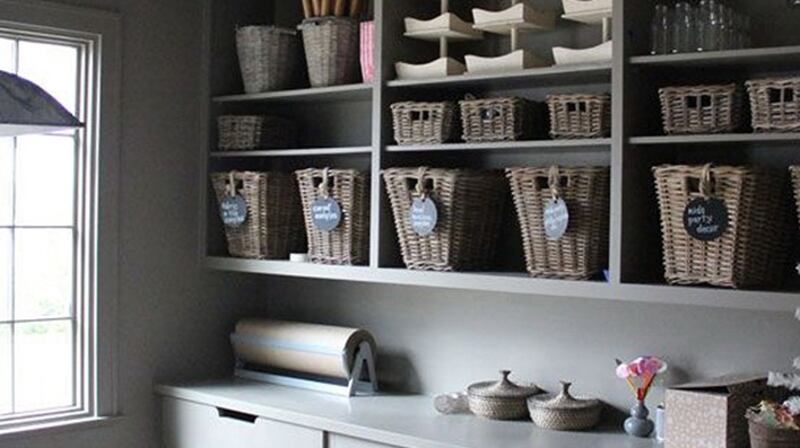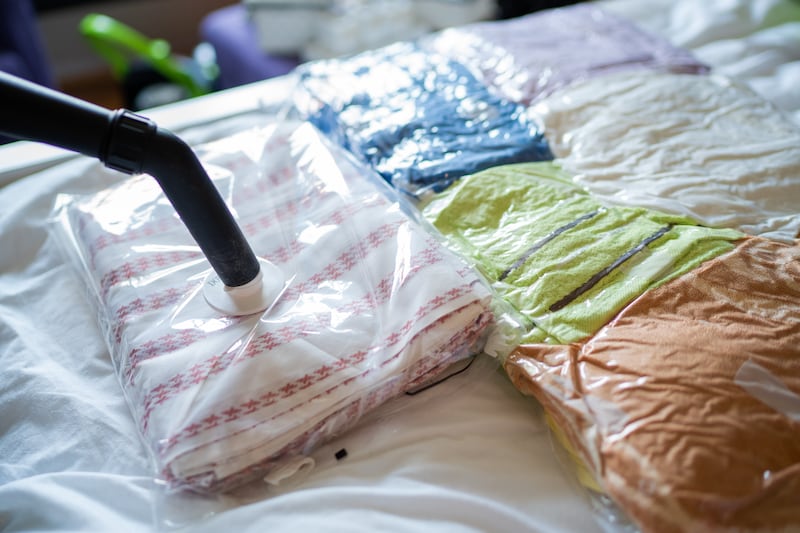We all accumulate clutter to some degree or other – for some people it is an organised drawer or a stack of identical boxes clearly marked and neatly stacked in a corner of the attic. For others, the never ending build-up of not-totally-necessary items seems to take on a life of its own and threatens to overtake an otherwise ordered living space.
Anne Grogan can relate to this as, having moved house after her husband died five years ago, she donated a lot of unwanted clothing and big pieces of furniture to charity. But, because she had moved from a large house to an apartment, she was still left with a huge amount of stuff that she couldn’t bear to part with – “both for sentimental reasons and because they may come in useful one day”.
With very little storage space in her new accommodation, the mother-of-three lived with stacked boxes in her bedroom, her spare room and the hallway, along with many surfaces in the living room crowded with “bits and bobs”.
“I went from a five-bedroom detached house with lots of storage to a small two-bedroom apartment which has almost none, and no matter how much stuff I gave away, there were still so many boxes everywhere,” she says. “My daughter kept telling me to just get rid of everything, saying that I don’t need most of it any more. But that is easier said than done as they are my things, my memories, and there are also pieces I want to pass on to my grandchildren.
RM Block
“I was at my wits end trying to figure it out, but then my eldest son came up with the idea of a steel outdoor storage box, which he installed on my balcony. It is brilliant and I have put a lot of things in there – stuff I don’t need on a daily basis, but might need or want at some stage.
“He also bought me some vacuum bags for clothes and these are just ingenious – with his help, we have reduced big piles into neat little packages which fit under my bed and we also stuck labels on them so I know if they are winter coats or summer clothes or whatever. We also got some plastic boxes for my craftwork and other miscellaneous things and those are now under the bed in the spare room and on top of the wardrobes. It has made such a huge difference, as I was climbing over things before and I really didn’t know how I was going to manage to keep everything.”
It was situations like this which prompted Paddy Shortall to come up with a storage solution for apartment dwellers like Anne. The Overbox is designed to fit over the bonnet of cars in resident parking spaces. The height is adjustable and space inside is the equivalent of an average lift, so has ample room to store anything from bikes to sports equipment and more.

“The lack of adequate storage space within apartments has been a long-standing issue for residents,” he says. “While staying in an Airbnb on a trip to Australia a couple of years ago, I came across the over-bonnet storage box in the underground car park and quickly discovered it was big business Down Under, Asia and more recently in Germany. I did however learn that not all were the same and most were unsafe, unstable and not fire-rated, so I knew that insurers in Ireland would not allow them into apartment car parks.
“With this in mind, I teamed up with a manufacturer in eastern Europe where the patented Overbox was born, with its unique cantilever design and fire-rated coating, resulting in the boxes being accepted into the underground car parks by the insurers.”

The Overbox costs €2,600, inclusive of VAT, installation and delivery, and due to its size and ease of use, it is, according to its creator, “suitable for everyone”.
“When people come to look at an Overbox in our car park ‘showroom’ in Sandyford, most are surprised by how big it is,” he says. “It is 3m³ in size and its height is adjustable to allow any car or SUV’s bonnet to fit underneath. However, the higher the box sits might require a little more strength to close it, so to counteract this we also provide a pulley which hangs down from the handle to allow anyone, regardless of their height or strength, to close it.”
Anne Marie Kingston, founder and creator of White Sage Decluttering and White Sage Academy, says the key to successful storage is first trying to get rid of clutter, so you are not taking up valuable space with unnecessary items.
“People rush off thinking that storage solutions will solve their issues with clutter but this can add to the existing problems,” she says. “There is more than adequate storage in most homes, but we need to utilise what we already have, by doing a deep dive declutter, handling every single item, and checking condition to see if anything is broken, ripped or faded.
[ Need to declutter? This woman will make your wardrobe newOpens in new window ]
“When it comes to items that you are not ready to let go of, don’t just throw them out for the sake of it, as they could be keepsakes, sentimental items or valuables and this is where there can be regret if thrown out too fast – so put them aside, and if you can’t make a decision, come back to them in a month and keep reviewing them.

“You may have items in your home that you will never let go of and that’s fine too. It’s your personal journey, no two people’s clutter is the same, so be kind to yourself.”
Kingston says that getting rid of clutter is a continuous process as we are constantly adding to our possessions.
“Take out everything on a shelf or area, give it a good clean out with nice warm soapy water and a cloth, and handle every single item that’s in there,” she says. “Have a bag ready for recycling along with a box for charity and another for broken or chipped items – and it is vital to get the items out of the house within 12-24 hours as otherwise they may not leave the house or may come back into the house from the car.
Tidying and creating proper storage for items that aren’t used regularly can make a world of difference, not only to how your home looks, but also to how you feel
— Anne Marie Kingston
“This is the biggest no-no – if it stays in your car for a month, so be it, leave it there until you are passing the charity shop, bin or recycling centre and then drop it off.”
The professional declutterer says once you have decided what to keep and what to give away, pick up some clear storage boxes with lids and some vacuum bags which will be ideal for reducing the amount of space taken up by items which are not used daily.

“It’s important to get storage working for you, and large storage boxes are ideal for seasonal clothing, keepsakes for both adults and children in the house, dress-up costumes for kids as well as their artwork. It’s important to have clear bags and boxes so you can easily see what’s inside, but it’s also a good idea to invest in a label machine, such as Dymo LetraTAG LT-100H Label Maker, to mark the bags and boxes with their contents.”
Tidying and creating proper storage for items that aren’t used regularly can make a world of difference, not only to how your home looks, but also to how you feel.
“When your space is tidier, your mind is lighter and less busy, your concentration, productivity, mood and relationships are healthier, and sleep and wellbeing will improve as clutter has been linked to anxiety and depression,” says the Cork-based expert.
Find The Irish Times on WhatsApp and stay up to date





















